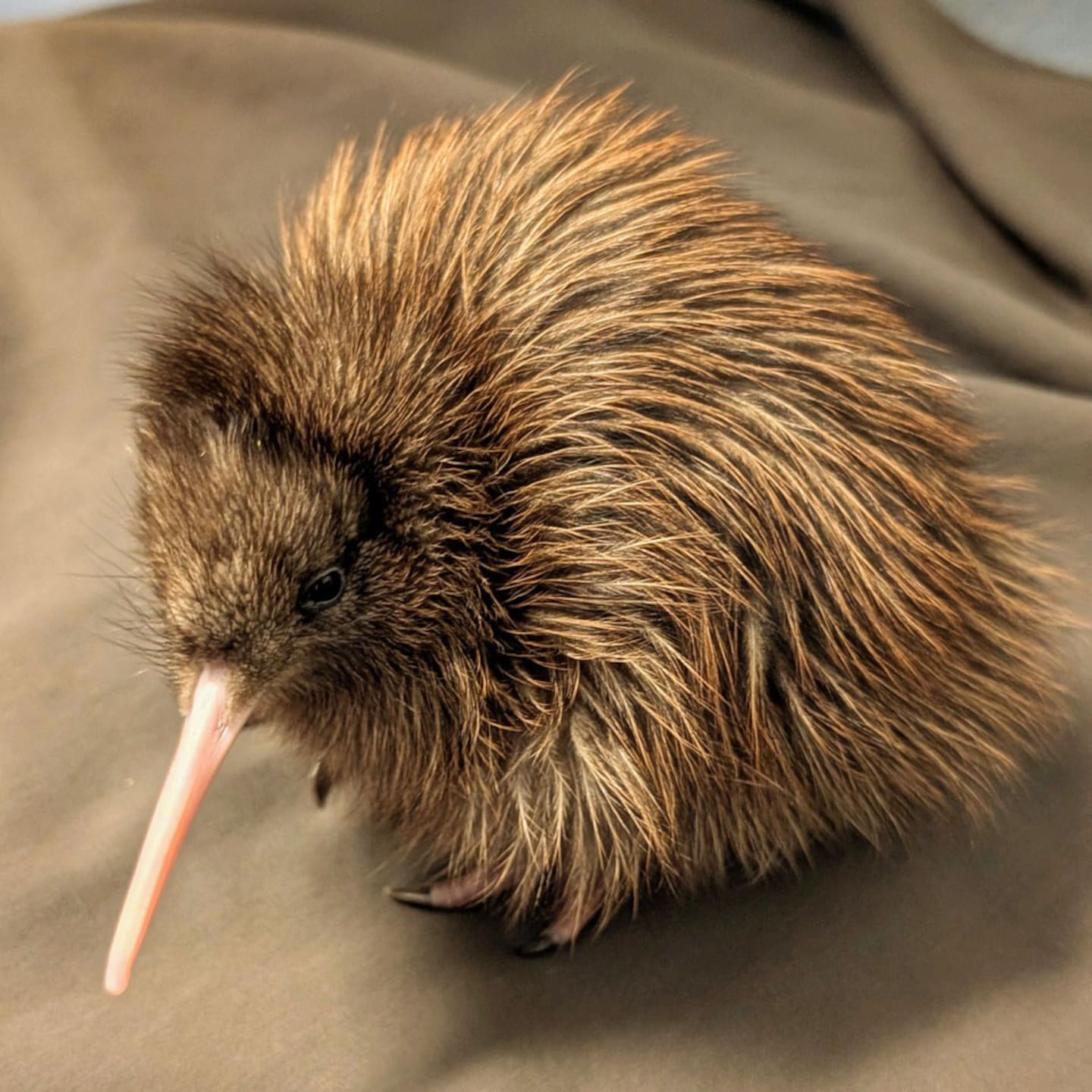
The West Coast Wildlife Centre has celebrated a special arrival for the second time in the 2025 kiwi hatching season.
The centre houses one of New Zealand’s kiwi hatcheries for Haast tokoeka at the West Coast Wildlife Centre – one of only two kiwi hatcheries in the South Island.
At the end of October, the centre welcomed Cesi – the first Haast tokoeka kiwi chick of the 2025 season.
Cesi’s journey began when the egg arrived on September 24, 2025, weighing 337.2g and estimated to be 57 days old.
Since then, the centre has also welcomed its second tokoeka kiwi chick, Carter.
The centre’s wildlife manager, Devon Collins, said the pair are the first to be hatched at the centre since before Covid.
“Since Covid happened, we haven’t been hatching kiwi, so it’s kind of the ‘start of the restart’ of our hatching programme, which has been really exciting for us.
“Every hatch is a moment of absolute joy for our team.
“The Haast tokoeka is the rarest kiwi taxa on the planet – so welcoming [them] into the world is something truly special.”
Haast tokoeka are a taxa, or type of kiwi, found only in a small area of South Westland with an estimated wild population of approximately 500 birds.

Haast tokoeka are a type of kiwi found only in a small area of South Westland. Photo / West Coast Wildlife Centre
The Department of Conservation (DoC) oversees the Haast tokoeka population, conducting predator control operations aimed at reducing stoat numbers - the primary predators of Haast tokoeka chicks in the wild.
The operation involves lifting Haast tokoeka eggs from nests in the forest to protect the chicks from stoats before they are hatched safely at the West Coast Wildlife Centre or Willowbank Wildlife Reserve in Christchurch.
Before chicks reach a size where they can fend off predators, they are transferred to Orokonui Ecosanctuary near Dunedin or to predator-free islands.
This gives kiwi chicks the chance to grow before being released back into the wild.
Collins said the biggest threat for kiwi out in the wild was mammalian predation, which is one mammal hunting and killing another for food.
“Because New Zealand doesn’t have any native mammalian predators, it means that all of the kiwi’s defence mechanisms, especially when they’re young, are built around birds of prey,” Collins said.
“That’s actually why they evolved to become nocturnal is to avoid predation by the falcon.
“What that means for the little kiwi chicks is that a lot of the time, if they think they’re in danger, they’re actually going to freeze rather than running away or fighting back.
“That’s just put them on a platter for the suite of introduced predators that we’ve brought in.”

Before chicks reach a size where they can fend off predators, they are transferred to Orokonui Ecosanctuary or to predator-free islands. Photo / DunedinNZ
Richard Benton, the director of the West Coast Wildlife Centre, said each new chick gives the Haast tokoeka species a stronger chance of survival.
“The programme now has been so successful that they’re leaving more and more eggs actually out in the wild,” he said.
“The work that we’ve been doing, Department of Conservation, other facilities and the community really have come together nicely - so much so that the birds seem to be doing particularly well by being left in the wild.”
Benton said the centre, in partnership with DoC, iwi and the local community, had hatched and incubated 143 Haast tokoeka since opening in 2010.
But it’s not the only type of kiwi the centre has helped.
“We started in November 2010 at a time when the Rowi kiwi was really on the edge of extinction - I think there were around about 80 to 100 birds estimated to be left in the wild,” he said.
“I purchased a building here in Franz Josef, which was the Hukawai Ice Climbing Centre, and converted it from an ice climbing centre into a wildlife centre, particularly for the care of highly endangered kiwi.
“Since that time, we’ve incubated and hatched now over 353 Rowi kiwi - there’s estimated to be around about 650 left alive in the wild.
“Together in partnership with the Department of Conservation and other facilities, we have helped now bring those two birds back from the edge of extinction.
“Te Rūnanga o Makaawhio is the iwi down here in Franz Josef - we always like to recognise the help and support that they give us in helping us protect our precious taonga treasure.
“It’s a team effort; it’s not just us - we have the Department of Conservation, but we work with other captive management facilities around New Zealand and also the local community.
“Without their help, then we wouldn’t be able to achieve what we have managed to achieve over the last 15 years.”
Benton said the centre has 50,000 visitors a year through its doors.
“We’re the modern-day shop window, if you like, for wildlife conservation.
“We encourage people to come, visit us, go through the attraction, explore, learn, and understand, and then leave with a better understanding of what they personally need to do in order to help kiwi in your own backyard.
“That’s one of the key things that we do to try and help educate through advocacy, which is a key role of the West Coast Wildlife Centre.”
Take your Radio, Podcasts and Music with you









